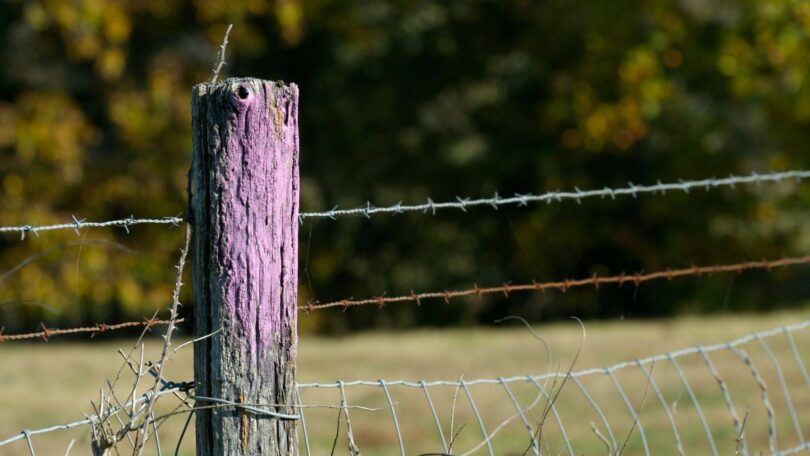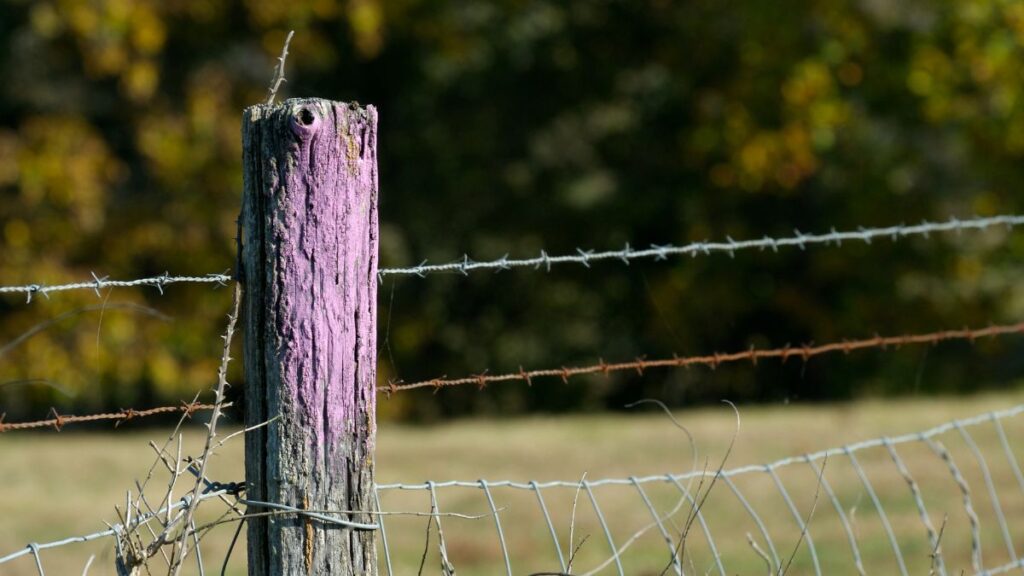
Have you ever seen a tree or fence post with a purple stripe when you pass a house? If so, you were undoubtedly left scratching your head, wondering what that might imply. Not only does the purple stripe add a bit of visual appeal to the fence post, but it also conveys a very serious and unfriendly message.
Returning to your origin would be the wiser course of action. What’s meant by purple fence posts? We’ll discuss the states in which they may be found, particularly those adjacent to homes.
Purple Fence Posts: What Do They Mean?
Several states have passed new legislation to prevent outsiders from entering private property. They are not required to erect “No Trespassing” signs made of plastic or metal. They can now just paint a purple line on a post or tree. Given that signs deteriorate with time and become difficult to see, it makes sense to make the message more visible. Another thing that could do harm to a tree is to drive a screw or nail into it.
Painting a fence post purple effectively deters visitors from entering a property without the need for verbal cues. While a sign may be stolen or misplaced over time, the purple paint endures and preserves the message for a far longer period of time.
In any event, individuals must comprehend the significance of purple fence posts in order to convey the message effectively.

Why do people use purple?
Purple stands out in the natural world, but its distinctiveness from other colors also draws humans to it. However, there are a few other colors that can be applied in the same manner, as we’ll see below.
How to Paint a Purple Fence Post
Due to its intense brightness, purple must be painted in a way that makes it stand out on a fence post. Three to five feet above the ground is the ideal height for painting the stripe. The band may not be visible if it is set too low. The band’s size should also be sufficient to be seen. Usually, one inch width by eight inches long is sufficient. You will also need to paint a post every hundred feet or so to indicate where the line is.
You can use any type of paint to paint a fence post. However, oil-based paint should never be used on trees as it may damage the tree. It’s highly possible that you will also come across spray paint specifically designed for marking fence posts and trees.
Which states prohibit the use of purple paint?
In 1989, Arkansas became the first state to enact a “purple paint law.” Nearly half of the states have followed suit since then. These purple dots are most likely to be found in the following states.
- States of Alabama
- Arizona; Arkansas
- The Sunshine State
- Wyoming
- Illinois-
- Ind.
- Iowan
- The Kansas
- The Louisianan
- the state of Maine
- The state of Maryland
- Missouri-
- Mont.
- Hampshire
- Carolinas
- Pennsylvania
- Carolinas
- The TN
- Tex
- Virginia – West Virginia.
What other paint hue could make the same statement?
Although several states have laws requiring the use of purple paint, this is not a requirement. You can use a hue other than purple to communicate the same message. In Idaho and Montana, orange paint can be used in place of purple paint; in Maryland, blue paint is utilized. Find out what the laws are in your state before marking your own fence posts.
If you come across painted fence posts in another state, they most likely indicate “do not enter.” Learn the laws of the new state you are visiting so you will know what to do to avoid getting in trouble.
